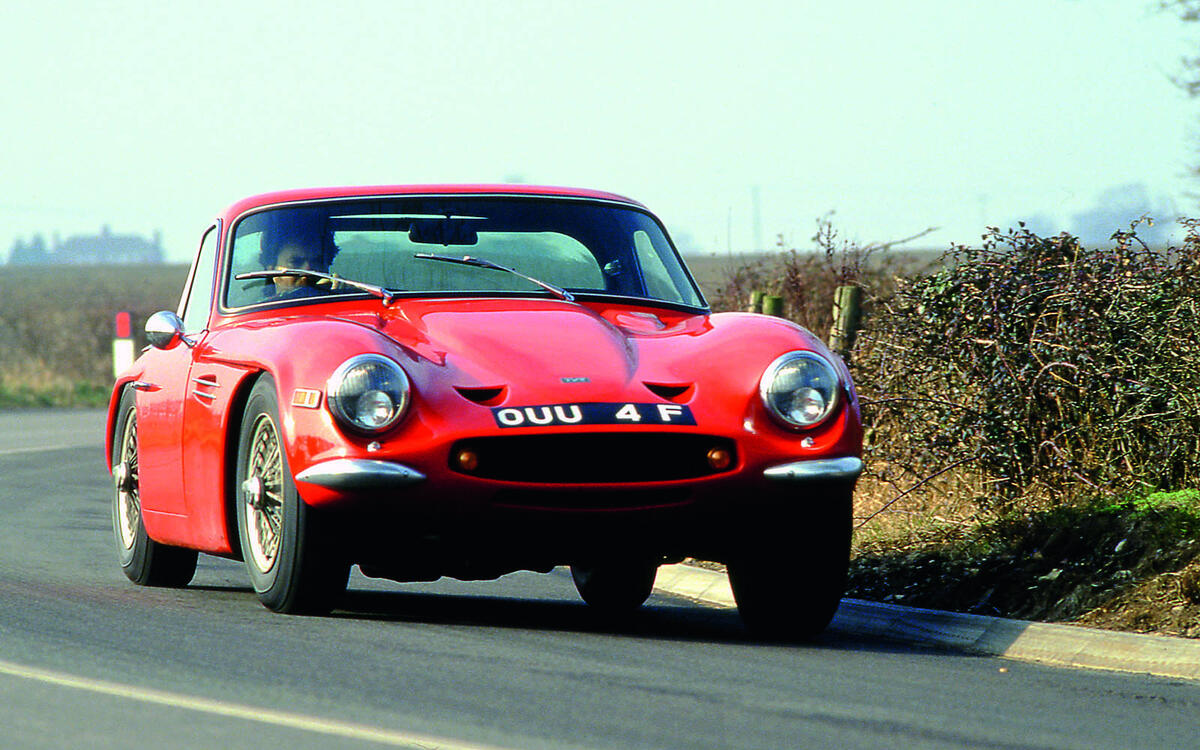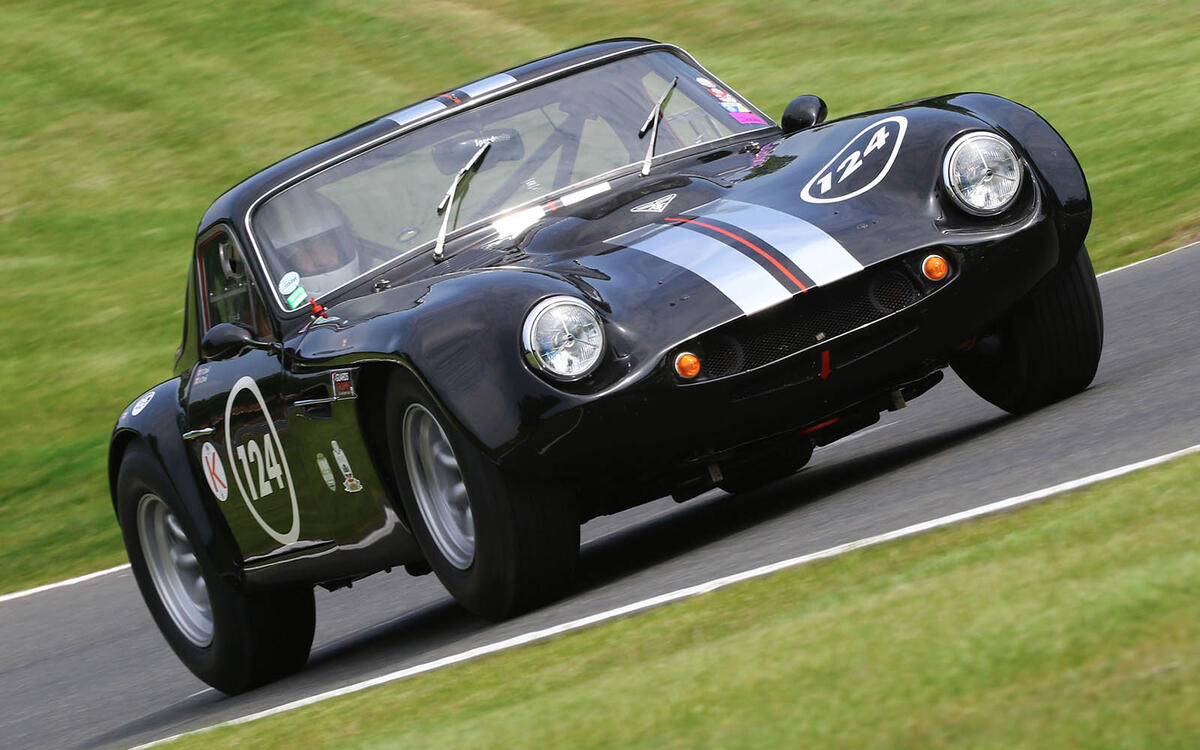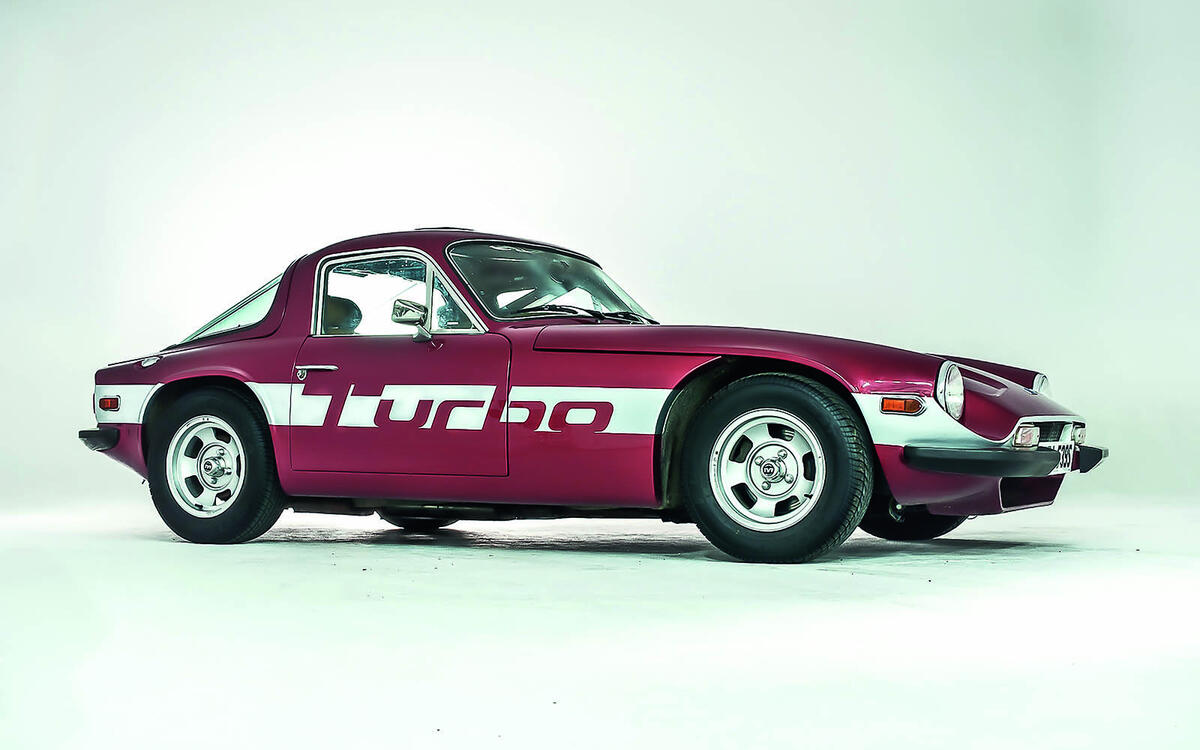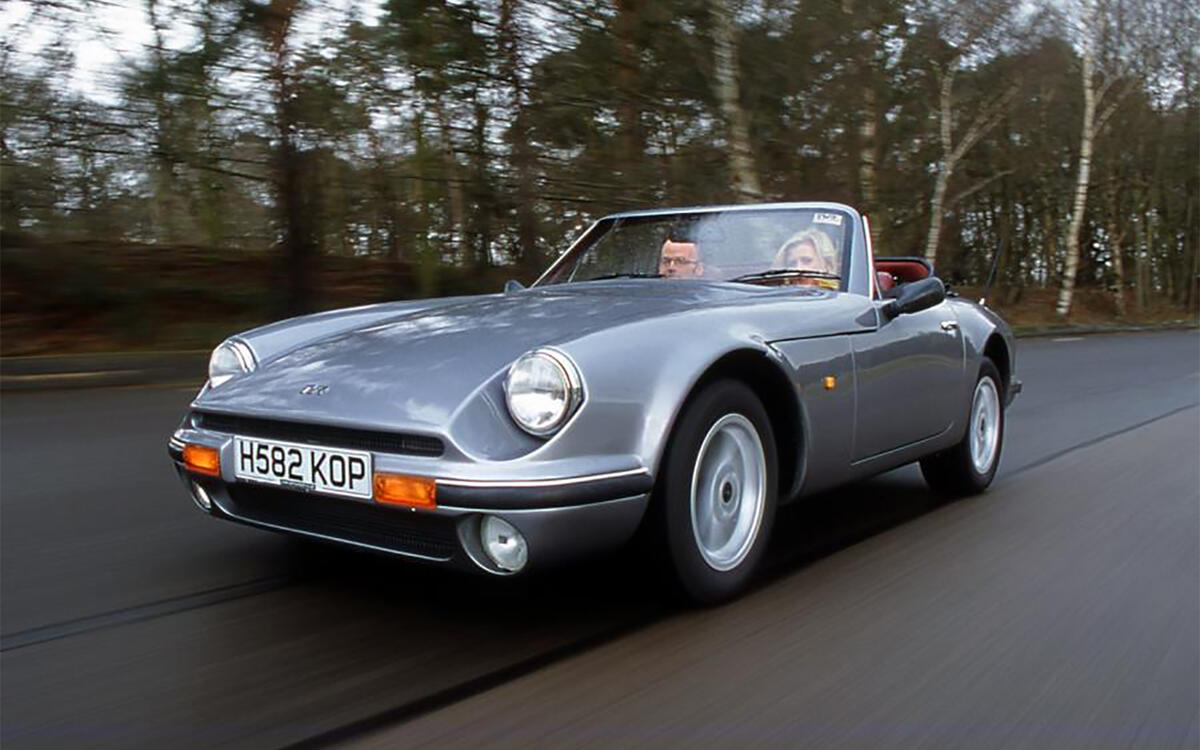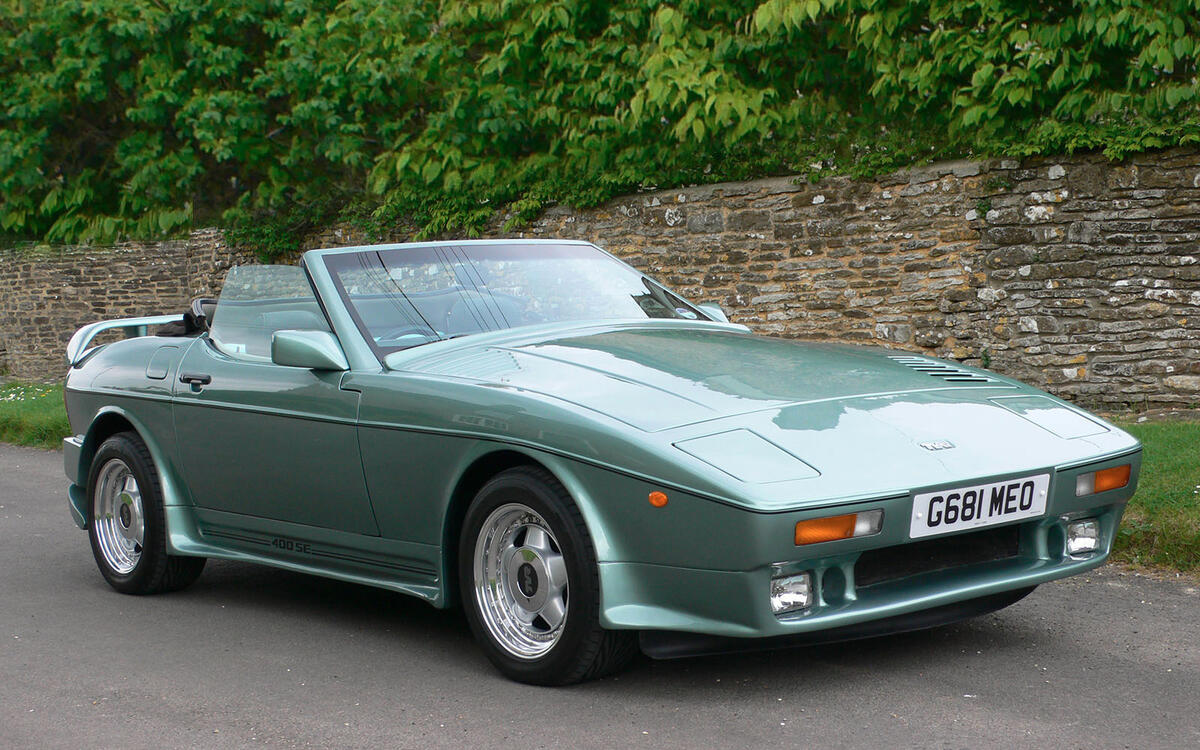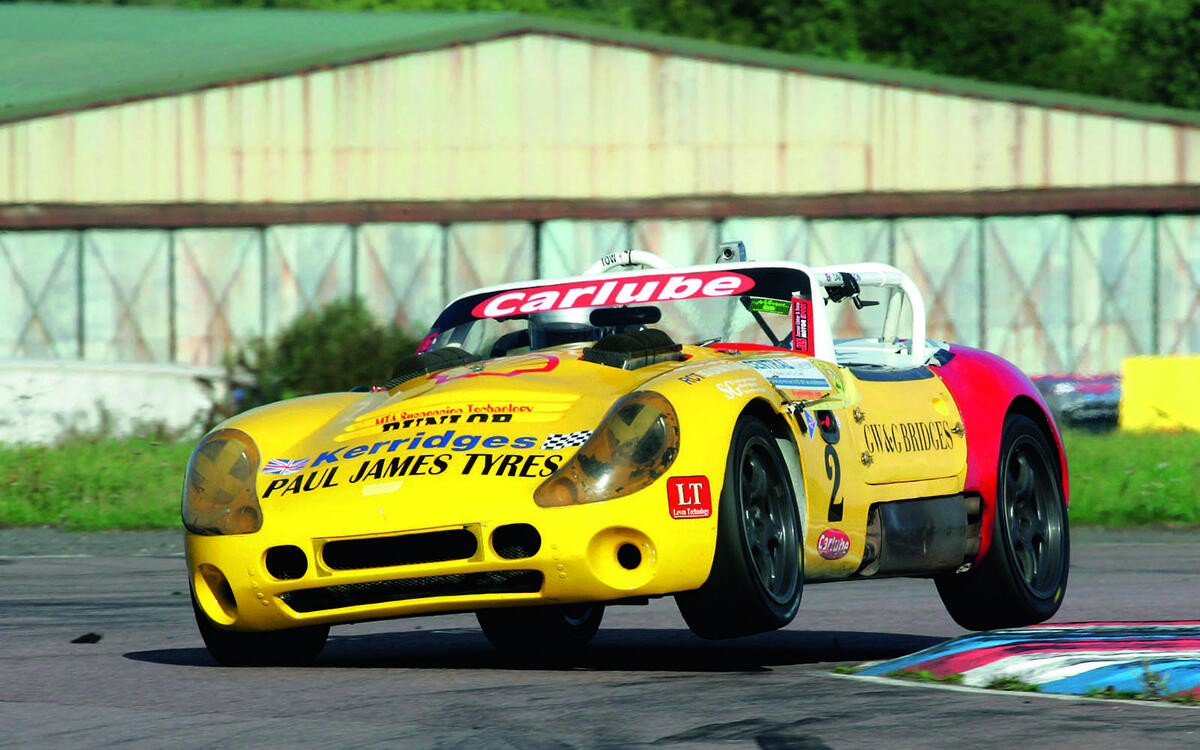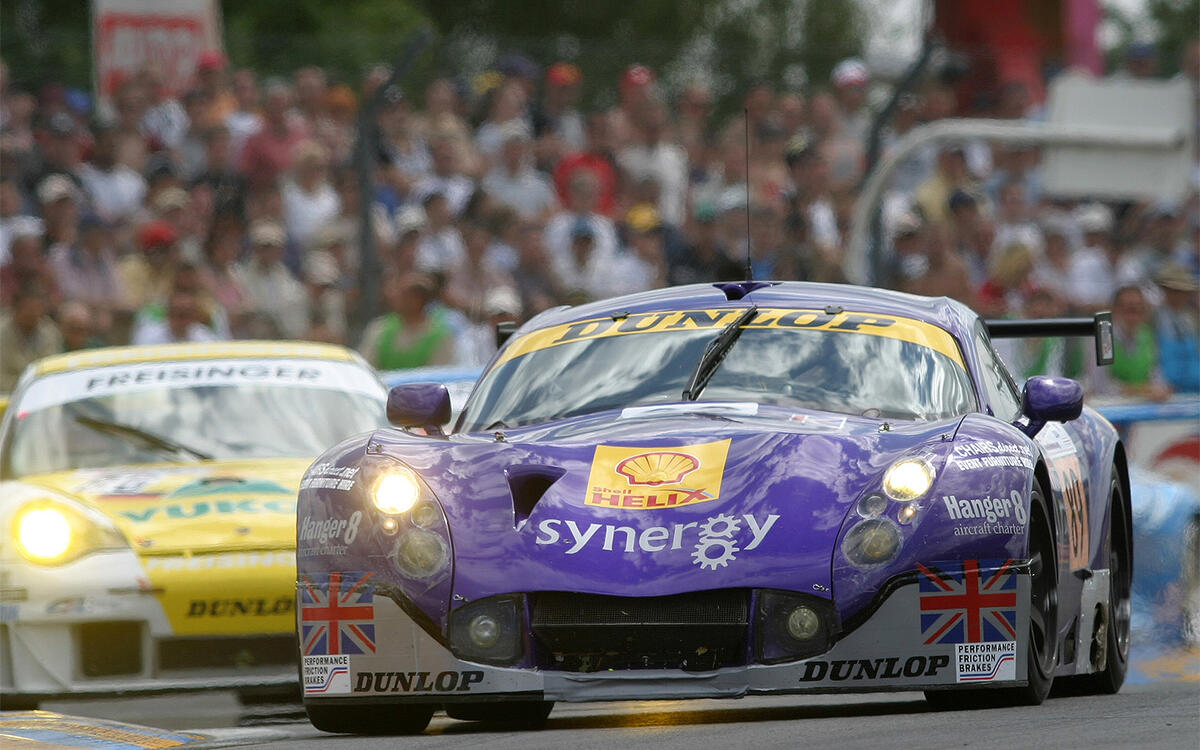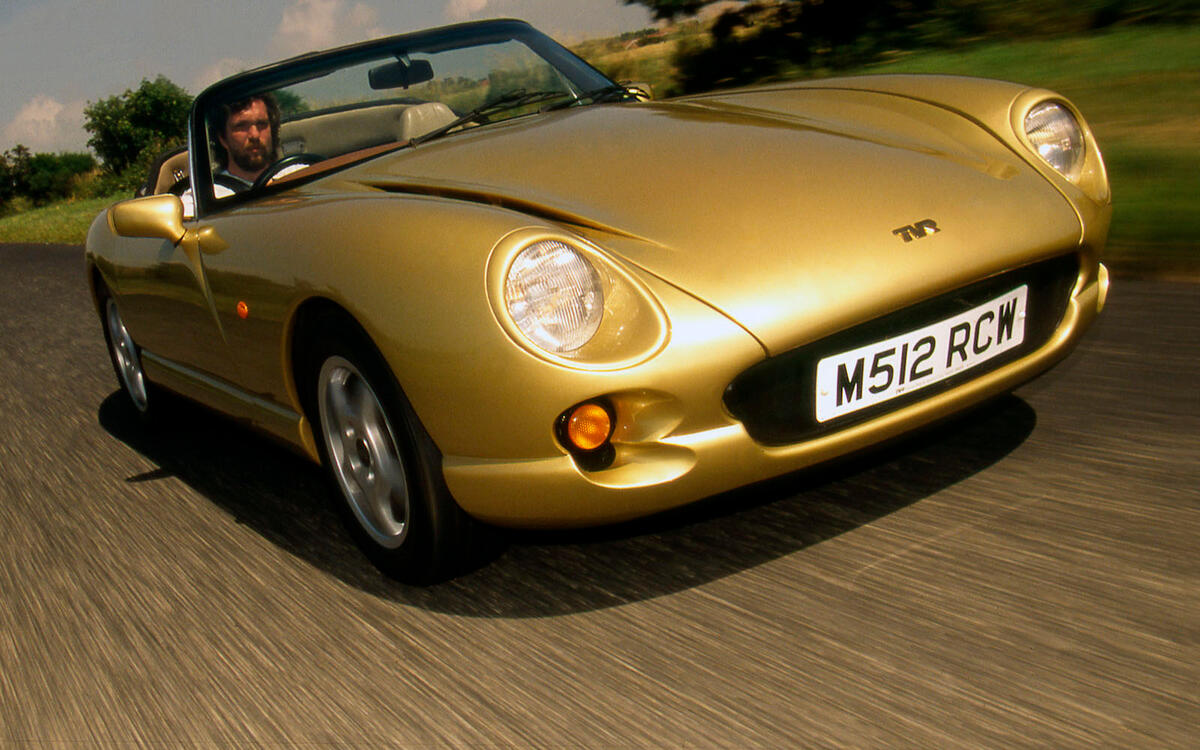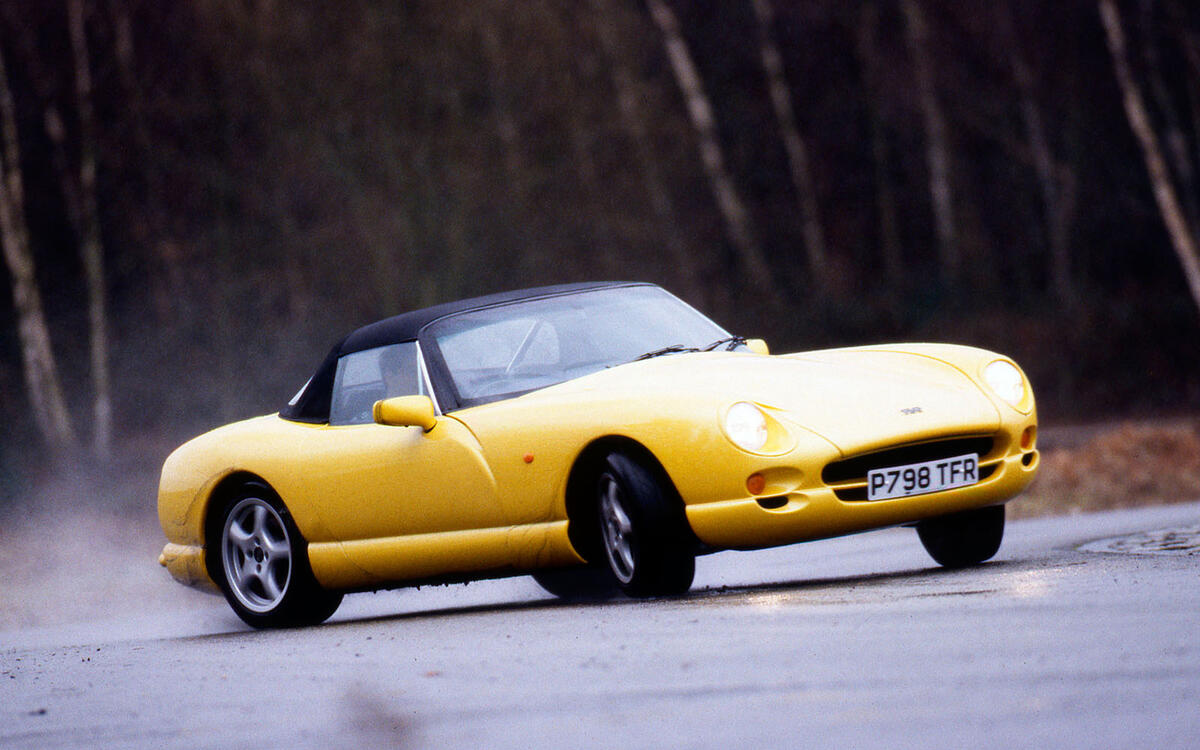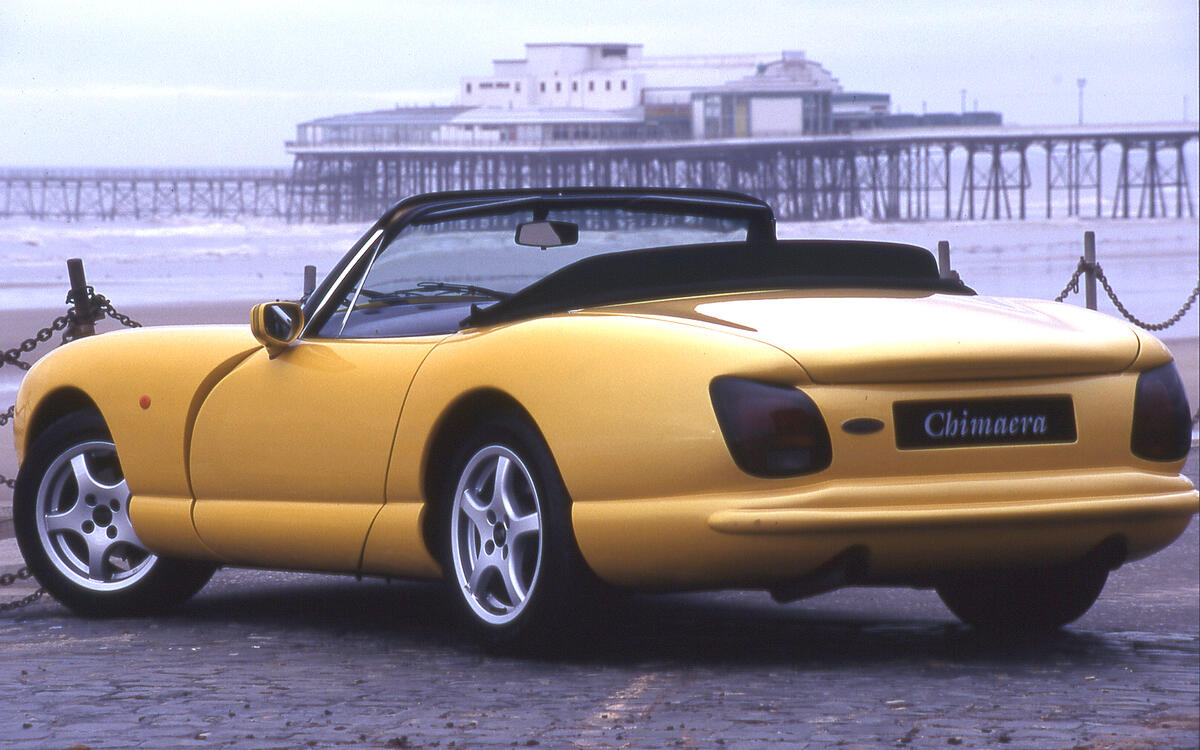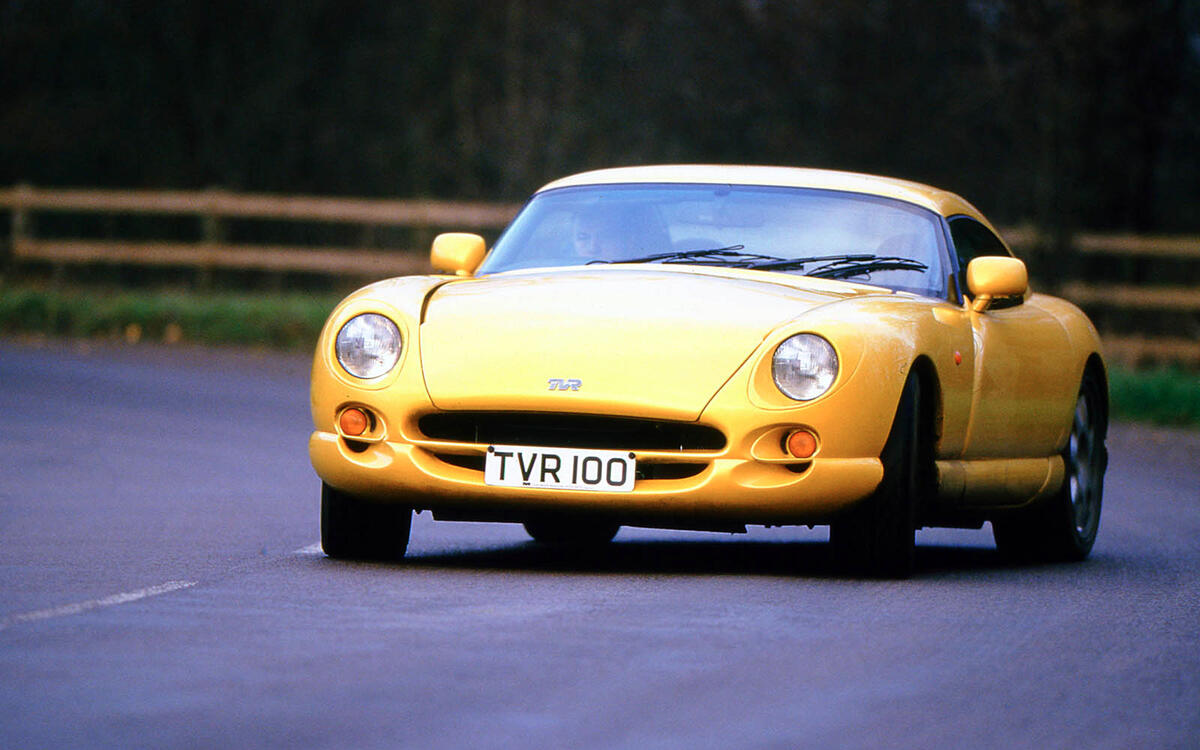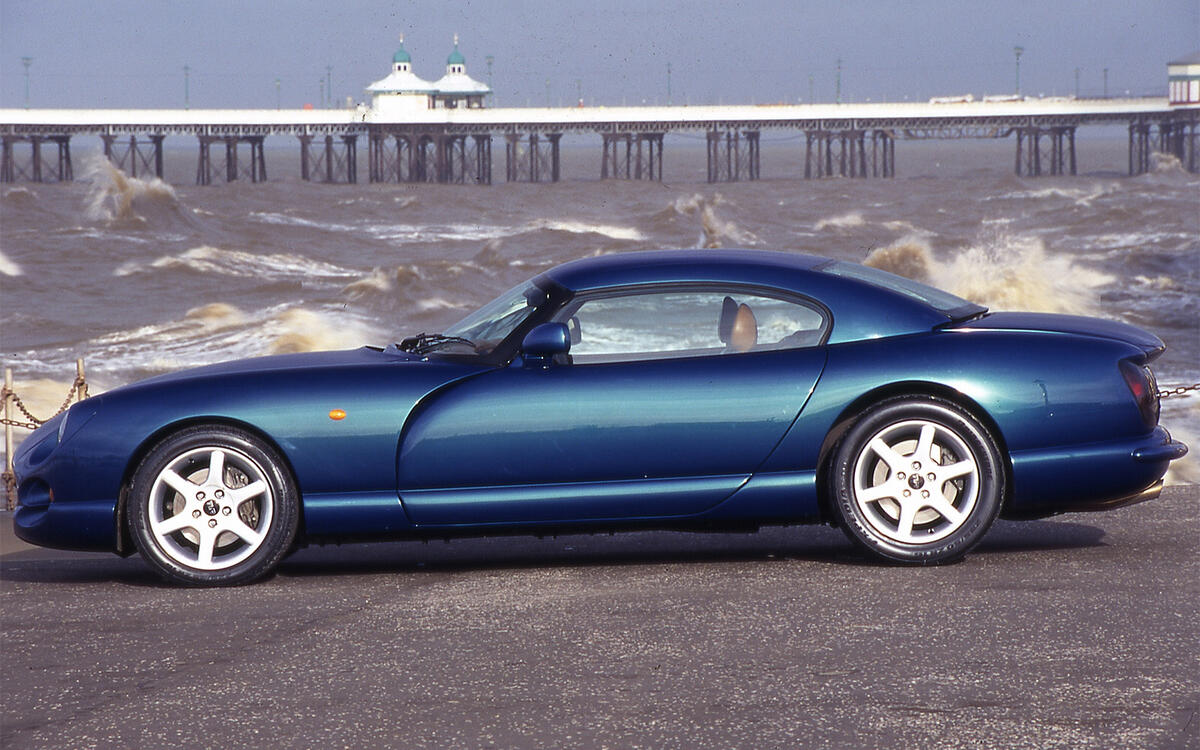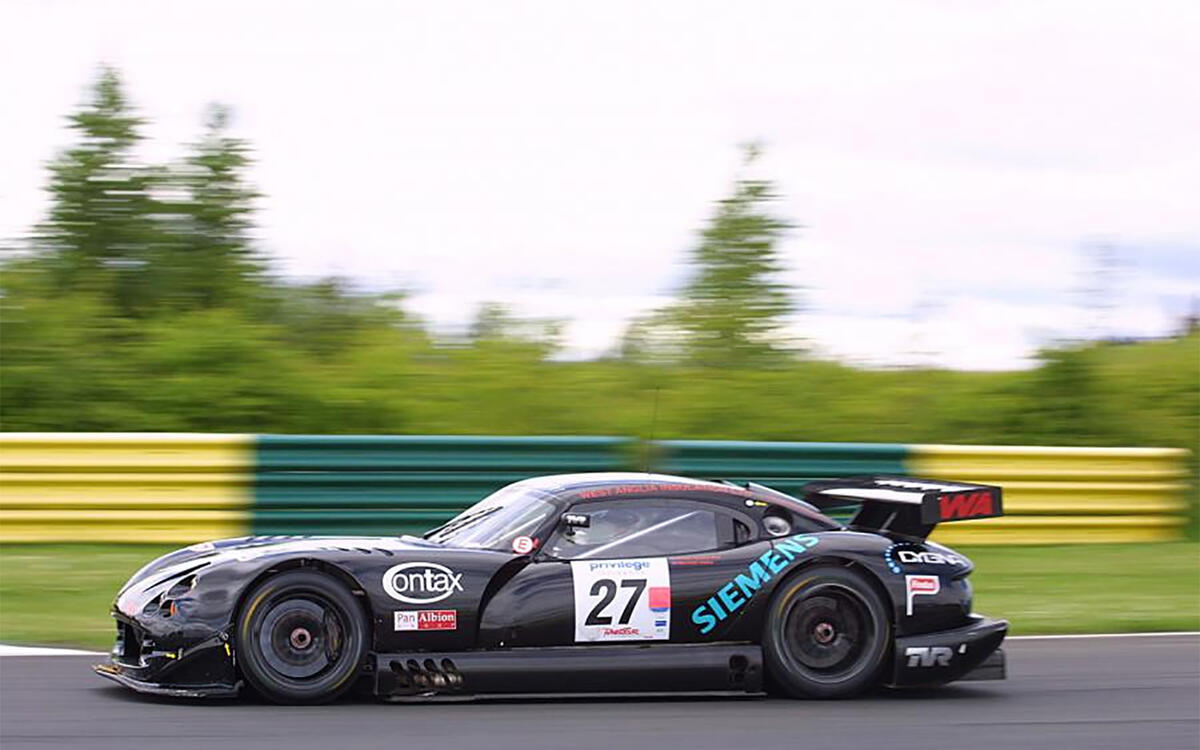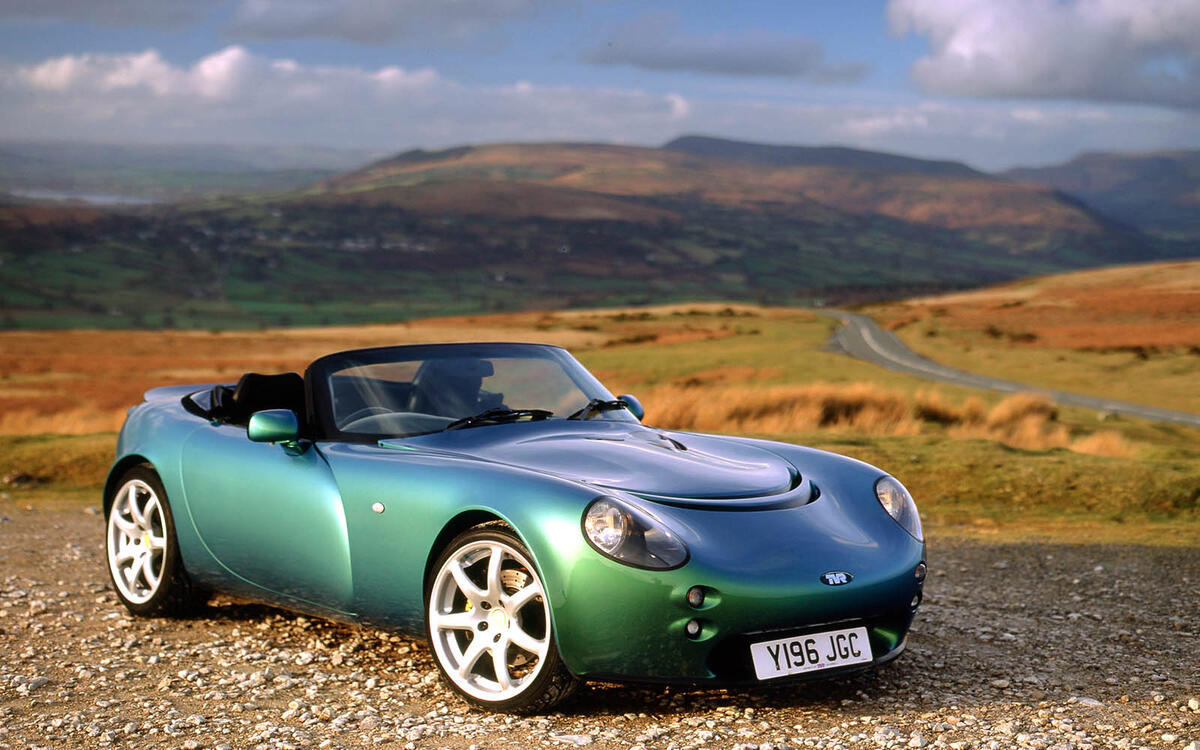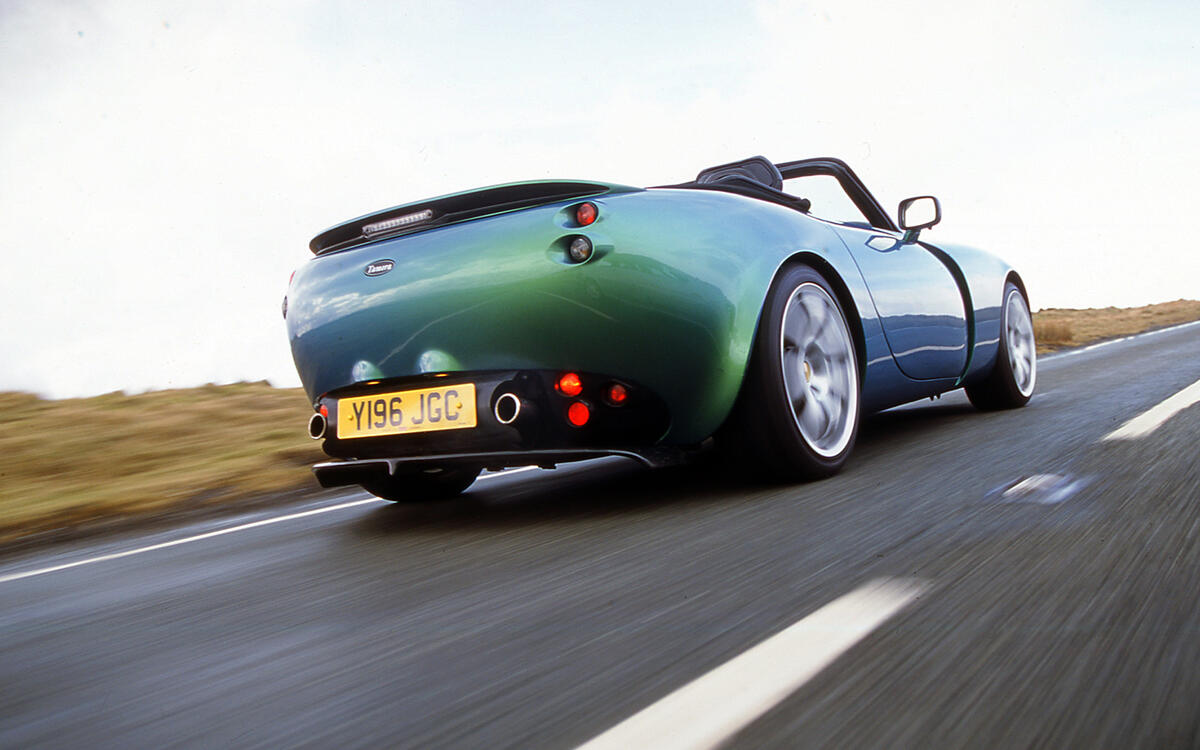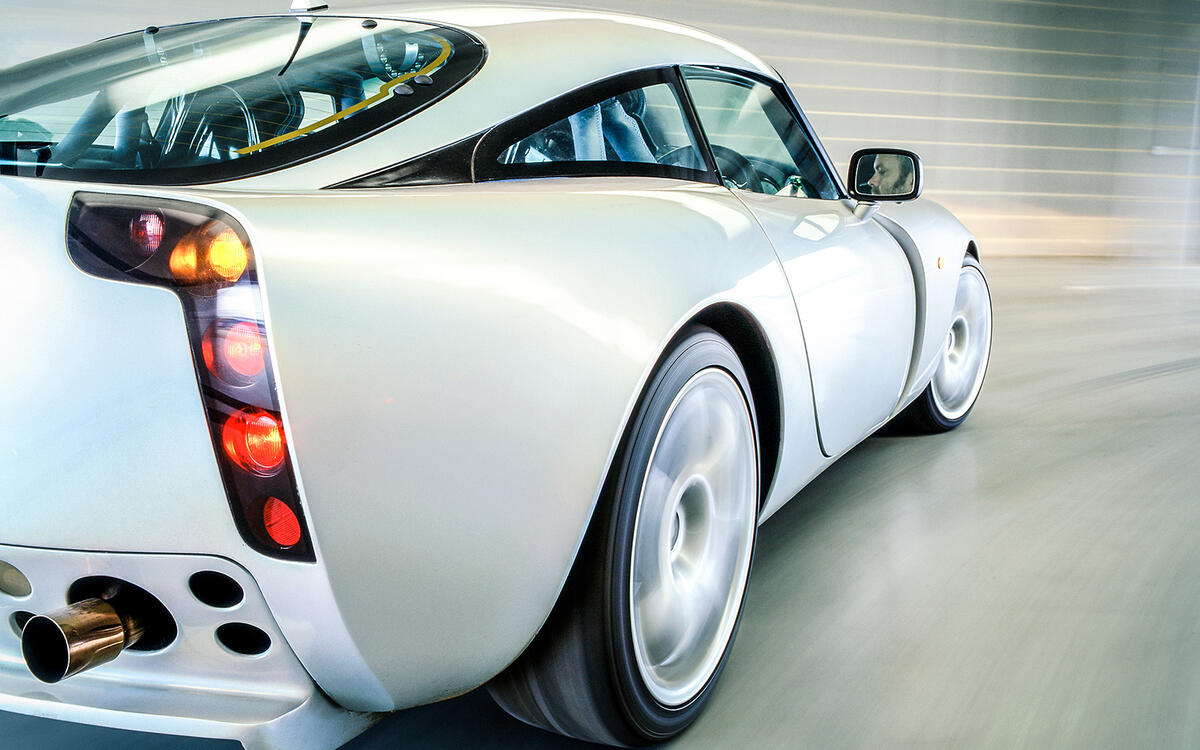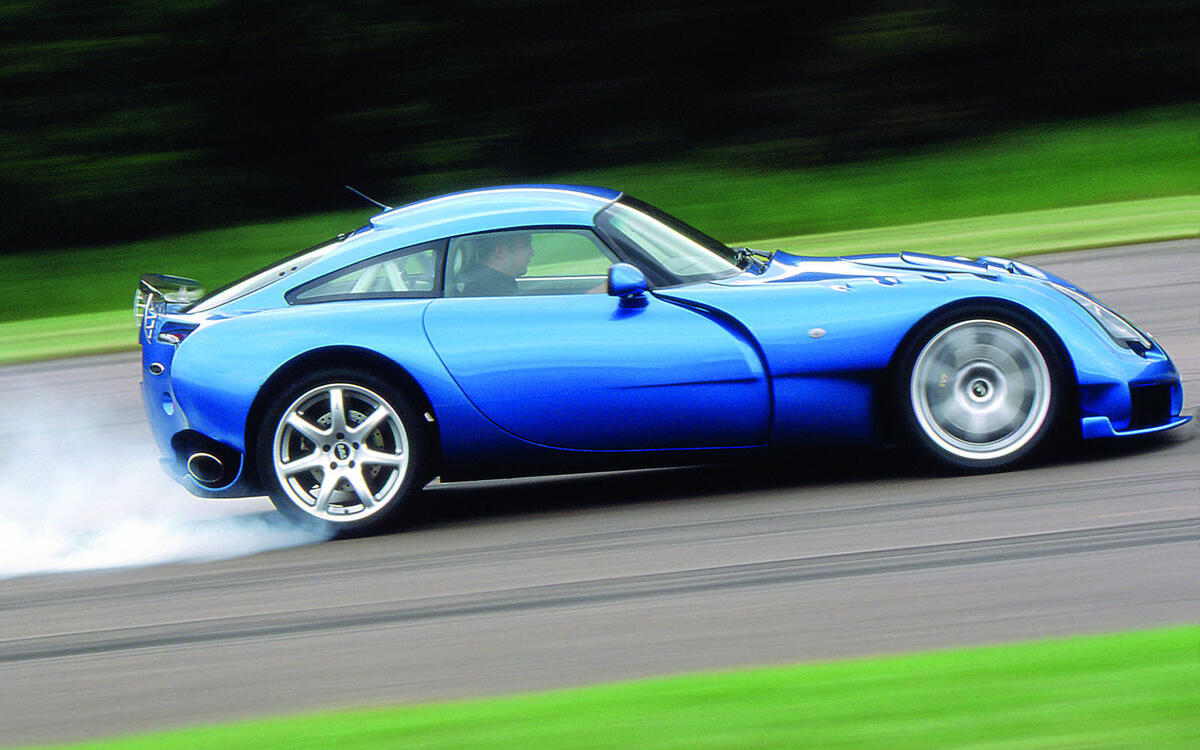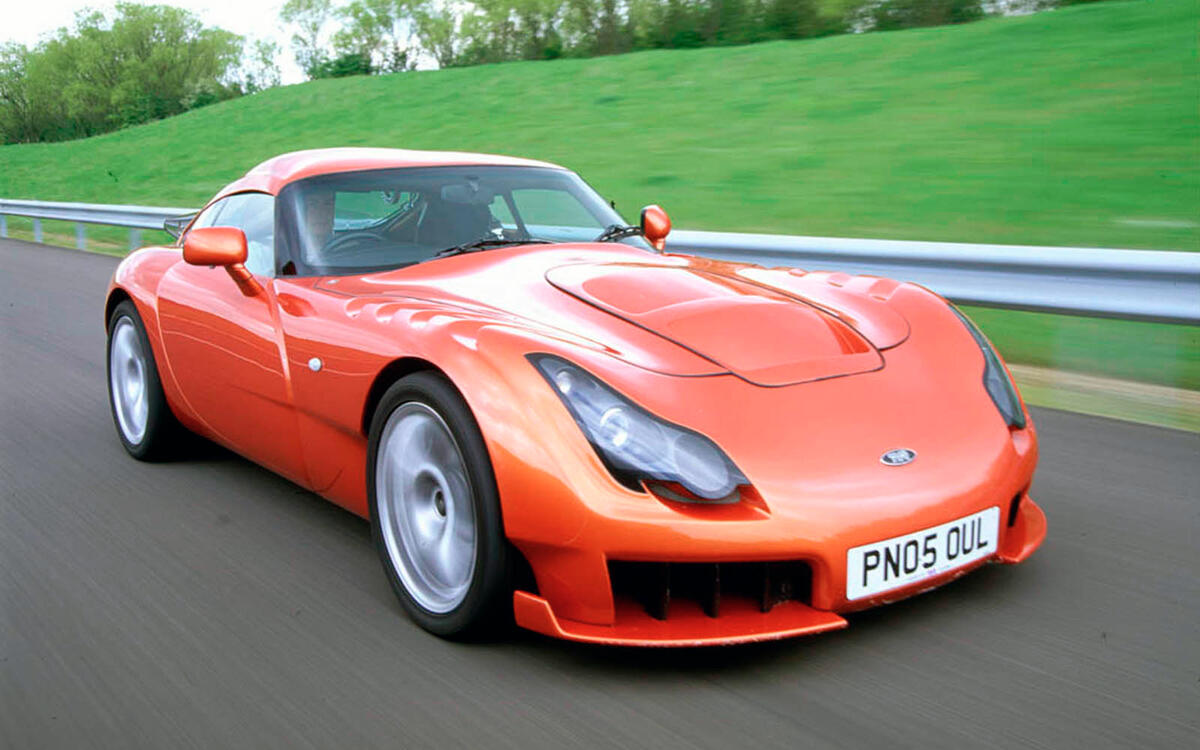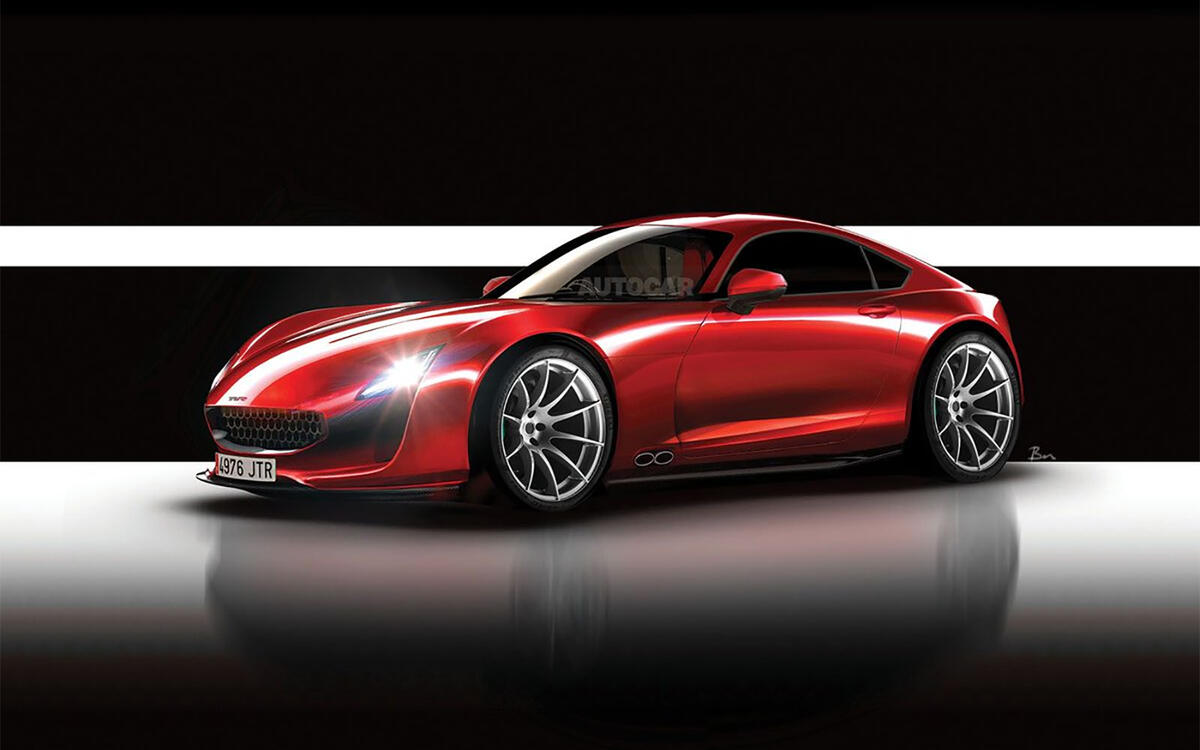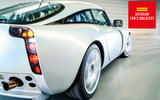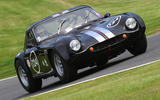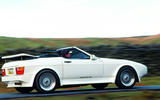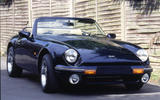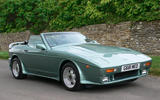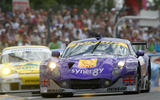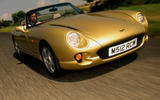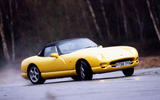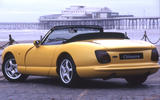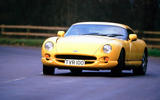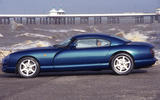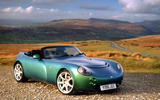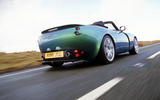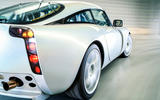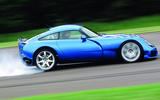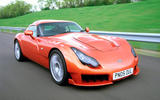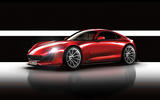 Slide of
Slide of
TVR is officially back.
The fabled maker of high performance pure-bred sports cars will unveil an all-new £100,000 machine at the Goodwood Revival event in southern England in early September – and its initial production run is already nearly sold out.High time we took a look at the cars that made TVR so special.
 Slide of
Slide of
TVR Grantura (1958-67)
An odd name for an even odder-looking car, but TVR's first model set the template to which TVR subscribed until its last days: simple chassis, short wheelbase, front engine, rear drive, glassfibre body panels and somewhat sub-Porsche construction standards. Early Granturas allowed owners to choose which engine to slot under the bonnet, but later cars were increasingly MG-powered.Surprisingly fast thanks to their extreme light weight (around 710kg), good fun and less scary to drive than they look, Granturas make excellent recreational road cars and even quite competitive historic racers. Pay from £30,000.Read the original Autocar road test of the Grantura from 1961
 Slide of
Slide of
Griffith 200/400 (1964-67)
During the 1960s, Jack Griffith, who ran a tuning shop in the US, persuaded TVR to supply him with chassis in order to satisfy his desire to perpetuate the tradition, started by the AC Cobra, of powering very small British sports cars with very large American V8s. Like the Cobra, the Griffith gained its power from Ford and in race trim could provide close to GT40 outputs in a car with the wheelbase of a supermarket trolley, and in the US went under the Griffith make name.Prized by historic racers today and a devastating weapon on road or track, original Griffiths are probably the most desirable TVR production cars. FIA-approved racer models sell for around £150,000.
 Slide of
Slide of
TVR M Series (1972-79)
Too many to mention by name individually, cars such as the 2500M, 3000M and Taimar provided TVR with a new direction and added a much-needed dash of practicality to the TVR product offering. The cars were better built and more spacious and civilised than any that had gone before, yet with very little deterioration in driver appeal.The series was notable for the introduction of the Taimar Turbo (pictured) in 1976. Britain’s first production turbocharged car, it offered a 230bhp hit from its 3.0-litre V6 and a top speed of more than 140mph. Pay from £4500.
 Slide of
Slide of
Tasmin, 350i, 420SEAC & all other Wedges (1979-1987)
As 1980s as Linda Evans’s shoulder pads, these TVRs need to be categorised as those made before and after Peter Wheeler’s arrival. Early cars, like the 2.0-litre four-cylinder Tasmin and even the 2.8-litre V6 version, offered only limited performance. Then Wheeler arrived, put the Rover V8 under the bonnet and created the 350i – and all was well again. If you can live with the looks, the 350i, 390SE and crazy 420SEAC (pictured) are genuinely underrated.Prices from £8,000 for scruffy 350s, but condition and history is important; scruffy interiors are inevitable, and the basic mechanicals are easy to put back together. But avoid cars with chassis rot and GRP damage, as this can make project cars unviable. Five grand buys something that works, but projects are yours for far less.
 Slide of
Slide of
TVR S1/S2/S3/S4 (1987-1992)
All S models look essentially similar, but S2 models from 1988 got a 2.9-litre version of the Cologne V6 engine, while a 1990 restyle introduced the S3, which remained until the end in 1992. They are relatively simple to look after mechanically but be wary of pricey GRP bodywork repairs. S4 (pictured) appeared at the end of the S’s life.
 Slide of
Slide of
TVR S1/S2/S3/S4 (1987-1992)
The first new model under the Peter Wheeler TVR era - he bought the firm in 1981 - the conspicuously retro-looking S models were designed to keep an affordable car in the line-up for enthusiasts who could not stretch to the expensive wedge models or, indeed, simply didn’t like the Buck Rogers styling. The chassis was simpler than that of the Tasmin and only tough Ford V6 power was offered. While the S models lack the white knuckle appeal of the hairier TVRs, sub-seven-second 0-60mph times and 140mph top speed ensured strong sales right up to the end of production in 1992.
 Slide of
Slide of
TVR 400SE/450SE (1988-91)
The final ‘wedges’ previewed the performance of the curvy next-gen TVRs in a softened version of the Tasmin’s angular bodyshell. In truth, the 4.0-litre version’s 268bhp has more than enough poke for all but the most hairy chested, given the car’s 1150kg kerb weight. It's recognisable by softer lines, a deeper front spoiler and prominent skirts over the other wedges, along with a price tag that heads into five figures.
 Slide of
Slide of
TVR Tuscan Racer (1989)
One of TVR’s most successful cars wasn’t even road legal. Instead, the Tuscan racer was the subject of an extremely well-supported, highly regarded one-make race series that lasted for 16 years in its original form. Early Tuscans were powered by Rover’s GM-derived V8, but later cars featured TVR’s own AJP engines. Tuscans weren’t easy to drive in the dry and could be notoriously unforgiving in the wet, but a tight set of regulations meant you couldn’t buy speed or disguise a lack of talent; good drivers did well, journeymen did not.
 Slide of
Slide of
TVR Tuscan Racer (1989)
Eventually, a version even raced at Le Mans (pictured). Today, and even if just used on track days, a Tuscan racer is ferocious and potent and suffers fools not at all. Pay from £25,000.We thought you were dead - Autocar drives the last TVR Tuscan
 Slide of
Slide of
TVR Griffith (1991-2002)
Great-looking, simple, delightful to drive and these days even wholly reliable, any well-maintained Griffith is not only a great TVR but also one of the great British sports cars of its or, indeed, any other era. 5.0-litre versions did 4.1sec runs to 60mph, but all versions were capable of sub-five-second sprints and 150mph, and made a sensational noise. Pay from £18,000 – and you’ll be glad that you did.TVR Griffith - revisiting an all-time classic British sports car
 Slide of
Slide of
TVR Chimaera (1992-2003)
A silly name for the closest thing to a sensible TVR you’ll find. A spacious body conceals a vast boot and exactly the same running gear as you’ll find in the Griffith, and could be bought with the same V8 engine choices of 4.0-litre & 5.0-litre. Low prices in the past mean many have not been maintained properly and plastic bodies are brilliant at concealing horrors.
 Slide of
Slide of
TVR Chimaera (1992-2003)
Check the chassis and suspension in particular. Fernhurst TVR’s Graham Munt says the 5.0-litre Chimaera is his favourite TVR. Plentiful supply means prices for a nice one start from £12,500, though prices are heading north. A specialist service history is highly desirable if not essential.Used Car Buying Guide: TVR Chimaera
 Slide of
Slide of
Cerbera (1996-2003)
Brave for those who bought one, braver still for TVR, which decided that what it needed most in order to establish credibility in the marketplace was to abandon the strong, powerful, sweetsounding Rover V8s, which had provided such splendid service for so long, in favour of a new V8 designed exclusively for TVR by the somewhat eccentric Al Melling.
 Slide of
Slide of
Cerbera (1996-2003)
The new engine, dubbed AJP8, was as long on power as it was short on manners. It was an engine designed according to racing principles, and while it provided the Cerbera with outstanding performance in both 4.2 and 4.5-litre V8 guises, it is at least arguable whether it was a more suitable motor for a road car than the Rover unit. Construction issues aside, the rest of the Cerbera was great. There was also a 4.0-litre straight-six version, but V8s are more common. Condition is key; pay from £16,000.Fancy a TVR Cerbera? Do you feel lucky?
 Slide of
Slide of
TVR Cerbera Speed 12 (1997)
Powered by a V12, the car started life as a race car, and would eventually take part in the British GT championship, notching up several wins. However, TVR owner Peter Wheeler concluded that the car was too powerful for the road, and the road-going version was canned; one prototype was sold, and it would be worth a fortune today.
 Slide of
Slide of
TVR Tamora (2002-06)
The Tam-what? Despite being one of the later TVRs, the Tamora is also one of the more obscure. Designed as a more affordable and – whisper it – sensible alternative to the Tuscan, it still featured a 360bhp version of TVR’s own straight six engine in a car weighing less than a diesel Ford Fiesta. Engine issues aside, its biggest problem was that it looked odd. It was okay from the front…
 Slide of
Slide of
TVR Tamora (2002-06)
…but positively weird at the back, representing a rare off day for TVR’s designers. On the road, it was perhaps the nicest of all the later TVRs to drive, thanks to almost sensible suspension and a power output somewhere close to the capabilities of the chassis. Pay from £19,000.
 Slide of
Slide of
TVR T350 (2002-06)
Available in both coupe and targa form, the T350 featured TVR’s own 3.6-litre 350bhp straight-six engine, weighed just 1,187kg and was capable of 0-60mph in 4.4sec. When we tested it in 2003 we admired its edgy handling but emphasised that it required concentration to pilot effectively. Prices are now rising and you’ll have to pay at least £25,000 for one.
 Slide of
Slide of
TVR Sagaris (2005-2008)
This was the final TVR and, some will tell you, the best – although that depends very much on your definition of ‘best’. The Sagaris is possibly the maddest-looking of all the ‘standard’ production TVRs, and with a 400bhp version of TVR’s homegrown straight six, it was certainly very fast, with a claimed 0-60mph time of 3.7sec and a 185mph top speed. It shared much with the previous T350, and we loved it when it came out, being much more settled to drive, as well as much more comfortable.
 Slide of
Slide of
Sagaris (2005-2008)
The engine was appallingly unreliable when new, although most will have had their issues fixed by now. Complicated and uncompromising but always involving, the Sagaris is an expensive car to run. Their scarcity now means it’s expensive to buy, too. Prices for nice examples start at £50,000.Driven: TVR Sagaris 4.0
 Slide of
Slide of
New TVR
And so we arrive at TVR’s future. While neither owning nor driving one has ever been for the faint-hearted, we’re delighted to see TVR return and and we’re keeping our fingers firmly crossed for its reincarnation. PICTURE: Autocar’s artist impressionAutocar's coverage of TVR's new super-coupe
The Autocar guide to the best TVRs
Advertisement


